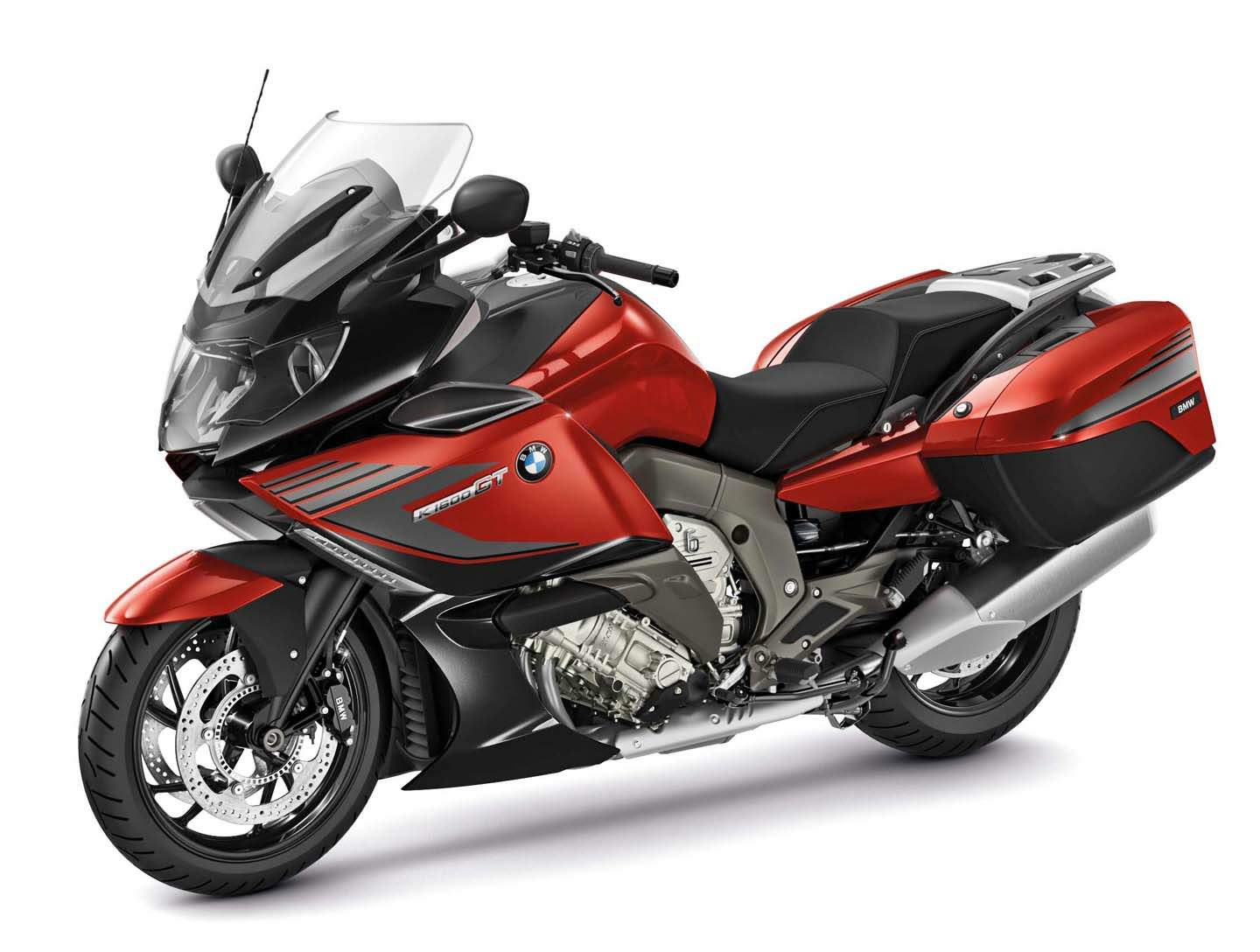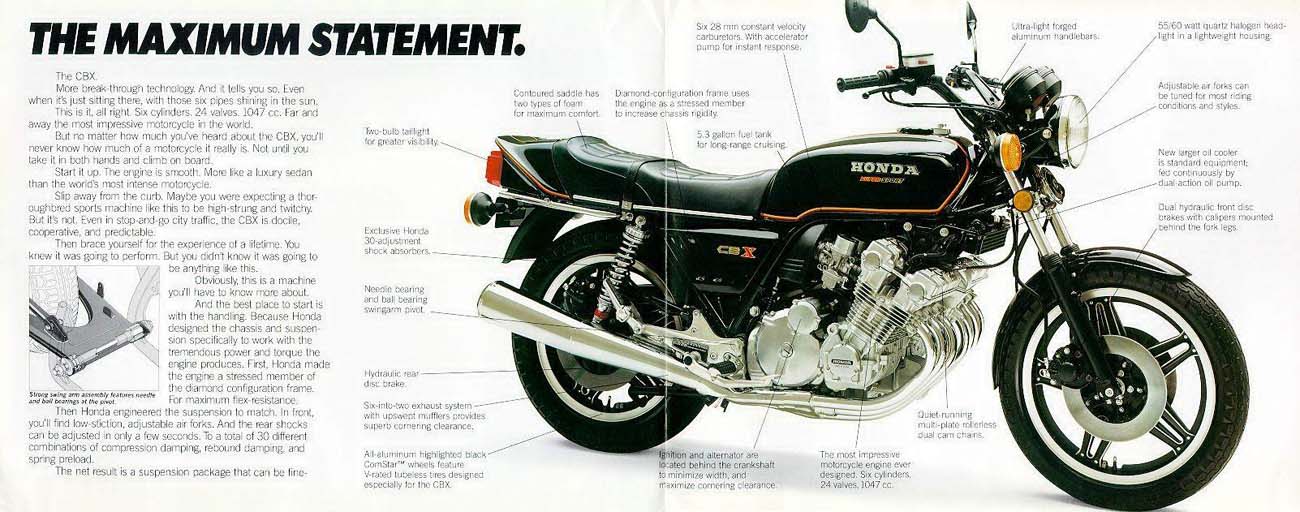Wut?

Yes, BMW finally caught up with 1979 Honda. It's about time, their engines have been stuck in 1968 for far too long. This is the BMW K1600, available in several different variants all targeted at different market segments.
Now we're all just waiting for them to catch up with 1983 Honda (V-Four engines).
The backstory - and you can read about this in many books about the history of the motorcycle industry so I'm not just pulling this out of my ass or "hating on BMW":
Sometime in the 1960s, BMW decided they were the world leader in heavyweight motorcycles. It wasn't based on sales numbers, but it wasn't a baseless assumption - most of the big names were gone or pale shadows of their prior selves. By the 1960s, Indian had folded due to mismanagement, Brough-Superior hadn't survived the war, Vincent had decided to quit while they were on top in 1955 (before the losses got to be too much), Triumph and the rest of the Brit manufacturers got conglomerated in the beginnings of the process that would eventually be called British Leylanded in the 50s. Pretty much BMW had some good reason to assume that they were supreme among heavy bike makers.
Unfortunately, what then set in was a version of the engineering arrogance that many associate with German manufacturers to this day. BMW Motorrad decided that as they were the leader of the industry, they would only adopt engine configurations that they had come out with first - because obviously they couldn't be seen as
followers. No, they had to be first in all things to show everyone else their place in the hierarchy.
BMW had been slowly and complacently working towards a replacement for their flat twin (two cylinder boxer) engine that had roots going back before WW2. One path BMW had taken was to work on an inline four mounted transversely in the frame. There had been a number of pre-war motorcycles that had an inline four, but those were all mounted longitudinally. BMW had been working towards an I4 engined bike through the 1960s. They really hadn't been paying much attention to the racing scene so they had little idea what Honda had been showing up with and even if they had, they didn't think it would have any implications for production vehicles.
So in 1969, right before BMW was starting to finalize their I4 bike design,
the Honda CB750 shows up.
This is a seminal bike in history. Much like the Model T or E-Type in the car world, you can divide motorcycle history into pre- or post-CB750. It is the first production transverse four cylinder motorcycle and it has the very first hydraulic disc brake on a production motorcycle. Unlike all the European offerings, the crankcases split horizontally instead of vertically and it has an oil pan so it doesn't leak oil. Electric start is standard, not optional. It's more powerful than anything BMW (or Harley, or anyone else) offers at the time it debuts.
This knocks BMW Motorrad management for a loop. Their own policy says that they can't introduce a competing model of similar configuration because that would mean admitting that they weren't the real market leader, that some upstart company from Japan had stolen a march on them. It would be *1974* before BMW unbent enough to admit that maybe they should just this once follow the rest of the industry and grudgingly install a front disc brake on their bikes. Front only, and only a single disc of moderate power. So for five long years, BMW sold top dollar machines lacking this important safety upgrade when the competition had hastily upgraded in order to keep up with Honda, all because of their own arrogance. Worse was to come for them in this department, but more on this in a moment.
So, after floundering around for a while, BMW Motorrad decided that the quickest way to show up these impertinent Japanese upstarts was to adapt their flat-2/boxer twin into a flat-four. Work was proceeding well and they were working towards a release in 1976 or 1977... and then Honda hits them *again.*
This time, they brought out the 1975 GL1000.
This is the first flat four mass production motorcycle in history. It's the first watercooled four stroke mass production bike in history. It's one of the first triple disc braked motorcycles in history (twin disc in the front, disc in the rear). It would turn out to be the very first truly intercontinental-capable touring motorcycle; in fact, it launched the formal touring segment. Rev it up and pop the clutch and it will leave a 100-150 foot burnoff mark behind it. It's heavy, it's powerful, and it promptly started eating BMW Motorrad's global lunch.
After this, BMW basically went back to their design studio and sulked for a few years. The depression got worse when they were about to start on a flat-six and then found out that Honda had actually started GL1000 development with a flat six development mule and had produced the four cylinder version instead because they didn't think the market was ready for a six cylinder bike. Basically, they realized that Honda could and would come out with a flat six at whatever time they so desired. Any plans BMW had for an inline six were shattered in 1979 when Honda came out with the six cylinder CBX1000.
Further insult was added to injury when Honda converted the CBX to be *another* touring bike (updated to then modern standards) to eat BMW's lunch.
I get ahead of myself though. After the premiere of the GL1000, BMW Motorrad was depressed and desperate. They were losing market share, their image as the supreme superior heavyweight motorcycle manufacturer was in tatters.
They were so desperate to come up with something new and distinctive that they took the engine from a Peugeot 104, tilted it even further on its side, slapped their name on it and installed it longitudinally. Yes, BMW was so desperate that they used a *French* engine from a *car* in what would become the 1983 BMW K100 motorcycle.
And that's where BMW's heavyweight bike engine and layout development pretty much
stopped for about the next 25 years. BMW was reasonably successful as a niche motorcycle manufacturer for that period but would no longer be considered an innovator in the industry, outside of some suspension and driveline stuff that was often of dubious benefit at best and seemed to many to be mostly gadgetry. (See my prior posts about how BMW and Honda solved the shaft drive jacking problem - BMW used a complicated multi-link assembly, Honda simply made the swingarm two inches longer; Honda's solution was cheaper, simpler, more reliable, much lighter and worked just as well.) It would be 2008 before BMW would be able to ditch their arrogance (driven again by dropping market share - heading from 'small' to 'miniscule') and rejoin the state of the art in the rest of the industry by offering their first transversely mounted I4 motorcycle, finally catching up to where Honda was in 1968. The K1600 came out in 2010, bringing BMW up to where Honda was in 1979.






